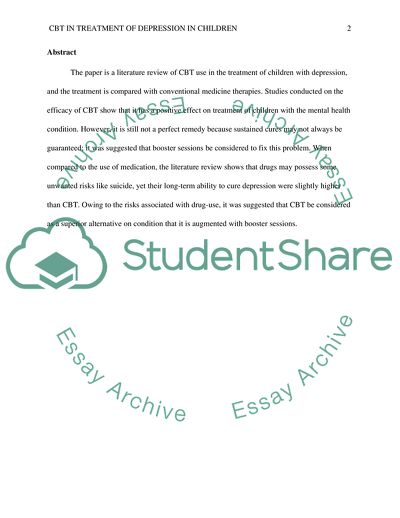Cite this document
(Cognitive Behavior Therapy in Treatment of Depression in Children Literature review Example | Topics and Well Written Essays - 2500 words, n.d.)
Cognitive Behavior Therapy in Treatment of Depression in Children Literature review Example | Topics and Well Written Essays - 2500 words. https://studentshare.org/psychology/1830628-cognitive-behavioral-psychotherapy-in-the-treatment-of-depression-in-children
Cognitive Behavior Therapy in Treatment of Depression in Children Literature review Example | Topics and Well Written Essays - 2500 words. https://studentshare.org/psychology/1830628-cognitive-behavioral-psychotherapy-in-the-treatment-of-depression-in-children
(Cognitive Behavior Therapy in Treatment of Depression in Children Literature Review Example | Topics and Well Written Essays - 2500 Words)
Cognitive Behavior Therapy in Treatment of Depression in Children Literature Review Example | Topics and Well Written Essays - 2500 Words. https://studentshare.org/psychology/1830628-cognitive-behavioral-psychotherapy-in-the-treatment-of-depression-in-children.
Cognitive Behavior Therapy in Treatment of Depression in Children Literature Review Example | Topics and Well Written Essays - 2500 Words. https://studentshare.org/psychology/1830628-cognitive-behavioral-psychotherapy-in-the-treatment-of-depression-in-children.
“Cognitive Behavior Therapy in Treatment of Depression in Children Literature Review Example | Topics and Well Written Essays - 2500 Words”. https://studentshare.org/psychology/1830628-cognitive-behavioral-psychotherapy-in-the-treatment-of-depression-in-children.


